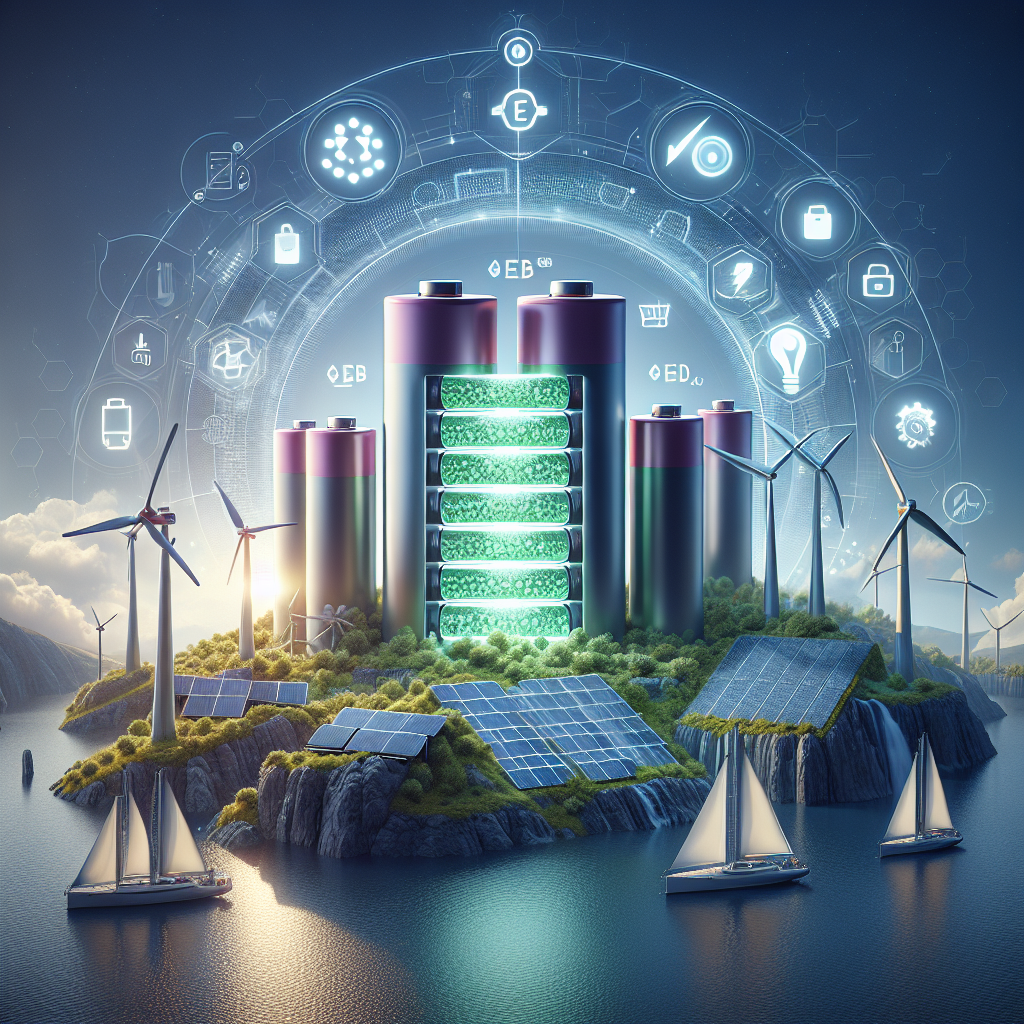Beyond Batteries: Exploring Alternative Energy Storage Technologies
In the realm of energy storage, lithium-ion batteries have long been the gold standard, powering everything from smartphones to electric vehicles to grid-scale storage solutions. However, as society moves towards more sustainable energy solutions, the limitations of traditional batteries, including resource scarcity, recycling challenges, and energy density ceilings, have prompted a search for alternative technologies. This exploration is not just about finding replacements but discovering systems that can store more energy, release it efficiently when needed, and minimize environmental impacts. Let’s delve into some of the most promising alternative energy storage technologies that could redefine our approach to capturing and utilizing energy.
1. Compressed Air Energy Storage (CAES)
Compressed Air Energy Storage (CAES) is a technique that stores energy in the form of compressed air in underground caverns or containers. When energy demand peaks, the compressed air is released, driving turbines to generate electricity. This method is particularly suited for large-scale storage and can provide a solution for storing excess energy from renewable sources. CAES systems are known for their potential for high energy storage capacity and long lifespan, making them an attractive option for grid stabilization and peak shaving.
2. Liquid Air Energy Storage (LAES)
Liquid Air Energy Storage (LAES) takes CAES a step further by cooling the air to a liquid state, significantly reducing its volume and allowing for more compact storage. When energy is needed, the liquid air is warmed and expands rapidly, driving a turbine to produce electricity. LAES systems can store energy for weeks and are highly scalable, offering a promising solution for long-term, large-scale renewable energy storage.
3. Flow Batteries
Flow batteries store energy in liquid electrolyte solutions, which flow through a cell to produce electricity. Unlike traditional batteries, which store energy in solid electrodes, flow batteries can be easily scaled up by increasing the size of the storage tanks. This makes them ideal for stationary energy storage applications, such as stabilizing the electrical grid or storing renewable energy. Flow batteries also have the advantage of a longer lifecycle and faster response times compared to conventional batteries.
4. Flywheel Energy Storage (FES)
Flywheel Energy Storage (FES) systems store energy in the form of kinetic energy using a rapidly spinning rotor. Energy is stored by accelerating the rotor to very high speeds, and when energy is needed, the rotor’s kinetic energy is converted back into electricity. FES systems are known for their high power density, rapid response times, and long lifecycles, making them suitable for applications that require high power for short durations, such as grid frequency regulation.
5. Thermal Energy Storage (TES)
Thermal Energy Storage (TES) involves storing energy in the form of heat or cold. This can be achieved using various materials, including water, molten salts, or phase change materials, which absorb or release heat as they change state. TES can be used for both short-term and long-term storage, providing solutions for heating and cooling applications, as well as power generation. TES is particularly attractive for its ability to utilize waste heat from industrial processes or renewable sources, improving overall energy efficiency.
6. Hydrogen Storage
Hydrogen storage is an emerging technology that involves storing energy in the form of hydrogen gas. Hydrogen can be produced through electrolysis (splitting water into hydrogen and oxygen using electricity) and stored under pressure or in chemical compounds. When energy is needed, the stored hydrogen can be converted back into electricity using fuel cells. Hydrogen storage has the potential for high energy density and long-term storage, making it a promising candidate for a wide range of applications, from transportation to grid storage.
FAQs
Q: How do these alternative storage technologies compare to lithium-ion batteries?
A: These technologies offer different advantages, including potentially higher energy capacities, longer lifecycles, and reduced environmental impacts. However, they also come with their own set of challenges, such as higher costs, technological maturity, and infrastructure requirements.
Q: Are these technologies currently in use?
A: Some, like CAES and flow batteries, are already being deployed at commercial scales, while others, like hydrogen storage and LAES, are in earlier stages of development and demonstration.
Q: Can these technologies help with the transition to renewable energy?
A: Absolutely. These storage technologies can play a crucial role in balancing supply and demand, stabilizing the grid, and ensuring a reliable and continuous supply of energy from intermittent renewable sources like wind and solar.
Q: What are the main barriers to the adoption of these technologies?
A: Barriers include cost, technological maturity, scalability, and the need for supportive policies and infrastructure. Continued research, development, and investment are critical to overcoming these challenges.
Q: How do these technologies impact the environment?
A: While all energy storage technologies have some environmental footprint, many of these alternatives offer the potential for lower impacts compared to traditional battery technologies, especially in terms of resource extraction and end-of-life disposal.
In conclusion, as we stride towards a more sustainable and resilient energy future, the exploration and adoption of alternative energy storage technologies are paramount. These innovative solutions not only promise to overcome the limitations of traditional batteries but also open new avenues for integrating renewable energy sources, enhancing grid stability, and driving the global transition to a cleaner, more sustainable energy landscape.

